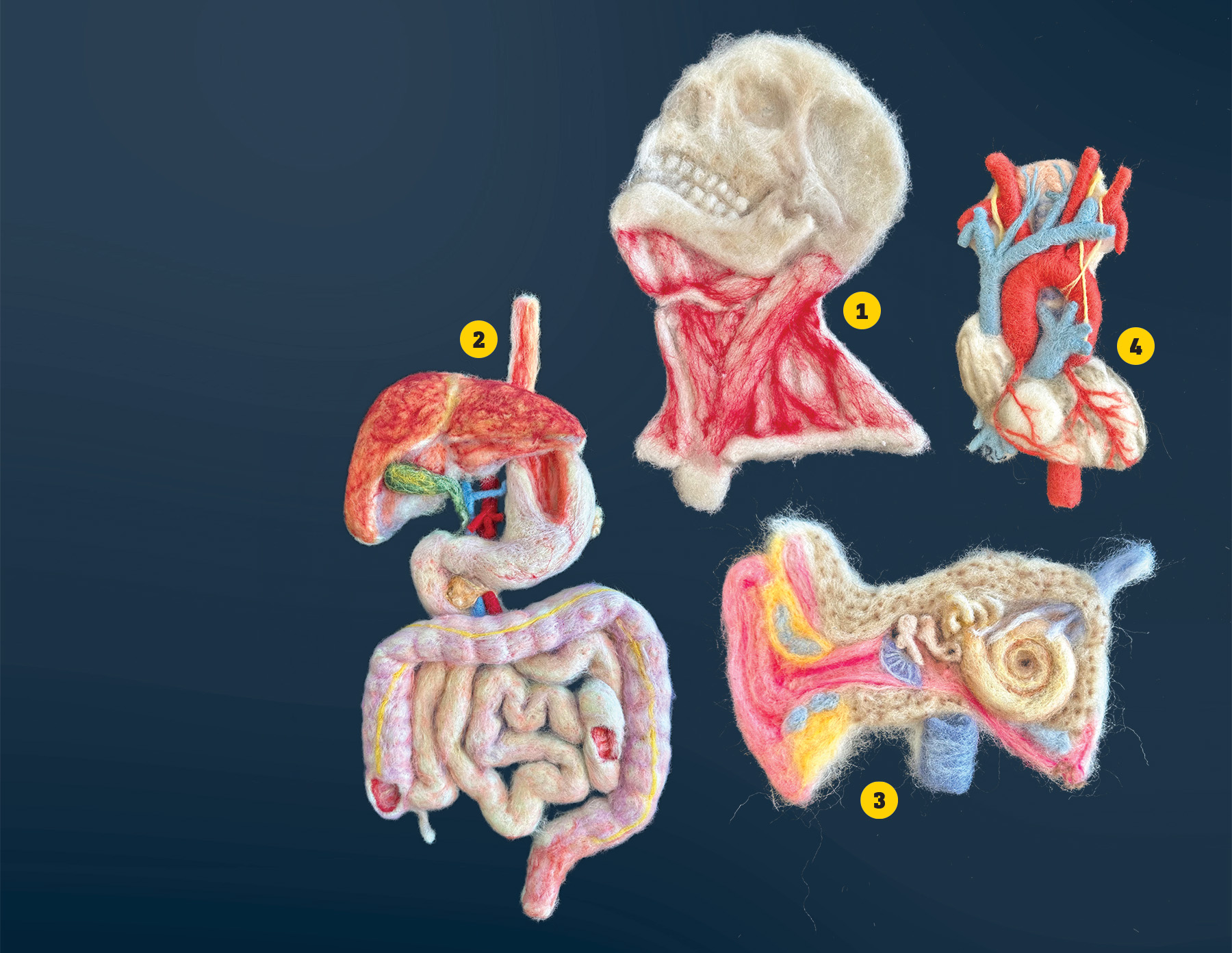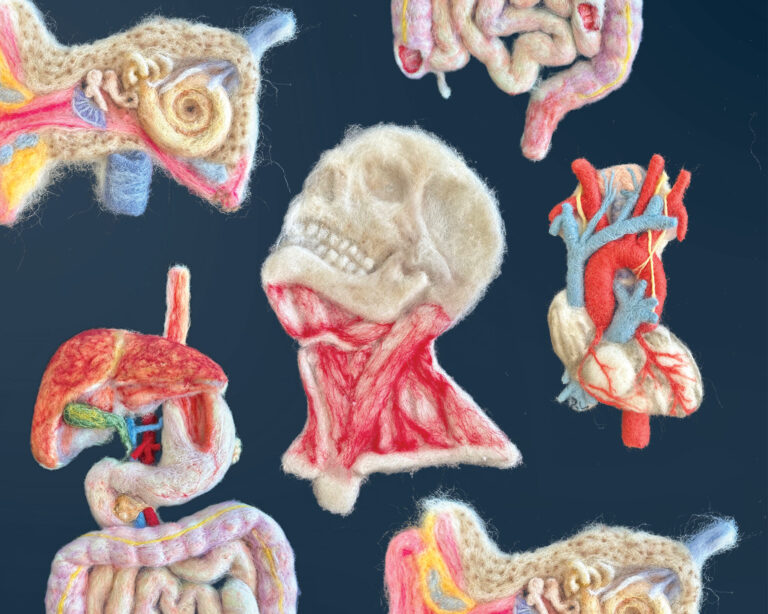
1 Neck and Skull 2 Digestive Tract 3 Inner Ear 4 Heart
For more than two decades, Ryan Lewis MHA ’94, MD ’98, has turned his meticulous eye to safely developing devices to repair aortic aneurysms or to enable robots to reattach tiny blood vessels in a surgical theater. The life-saving work is gratifying, but it doesn’t fulfil the creative impulses that have followed Lewis since childhood.
“Creating is a big part of my life,” Lewis says. “Without it, I feel like I’m missing something.”

Ryan Lewis MHA ’94, MD ’98
Fearing that a career as an ear, nose and throat specialist could become confining, Lewis never opted to hang out a shingle, although he is licensed to practice medicine in Arizona, California and Utah. After stints as chief medical officer for W.L. Gore and Associates and Megadyne Medical Products, he began serving as a consultant to device producers.
Along the way, Lewis discovered that jabbing wads of wool roving with felting needles helped focus his attention during daylong, pandemic-driven, remote meetings. It’s also, he says, a great technique for managing stress.
He had learned about dry felting through images of dogs, cats and woodland animals rendered in wool that he encountered on social media. Online instructional videos demonstrated the process.
The prospect of crafting cuddly critters held little allure for Lewis, who sticks to familiar terrain, creating a heart, an inner ear, a digestive tract, a skull, a fetus and more. For each creation, Lewis draws an outline on a piece of fabric that he attaches to a foam block before he begins.
Inspiration abounds in vintage drawings Lewis finds in “Gray’s Anatomy” and the “Netter Atlas of Human Anatomy,” although he has also begun producing non-human figures, such as a dissected snake. In the future, he may tackle the ornate structures found in electron micrographs of human cells and pathologies.
“Historically, art and anatomy have always overlapped,” Lewis says, citing Leonardo da Vinci’s training as an anatomist. “Understanding what lies beneath the skin has informed artists in the past and helped them to really be able to capture motion in still life.”
Felting allows Lewis, who offset some of his medical-school bills by tutoring first-year students with anatomical flashcards that he had hand-illustrated, to expand his artistry into three dimensions. It’s a fitting way for Lewis to honor anatomy’s rich history as a foundation for teaching and understanding.
“I’m celebrating that,” Lewis says.


